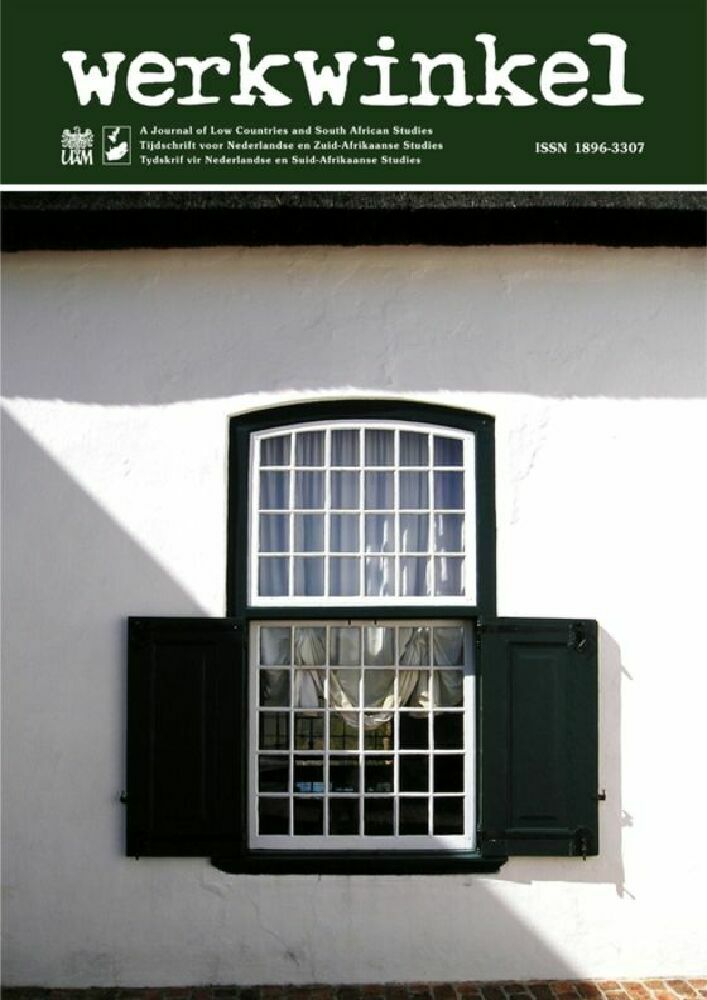Abstract
Over the last 20 years, literary nonfiction has become increasingly popular among the Dutch reading public. Thanks to increasing sales, translations and literary awards the genre achieved a strong position in Dutch literature. This article analyzes the image of Central and Eastern European countries in Dutch literary nonfiction of the last ten years (2004-14). It searches for characteristics of an orientalist and balkanist discourse and the presence of the imagological centre-periphery model in the works of Geert Mak, Jelle Brandt Corstius, Olaf Koens, Joop Verstraten and Jan Brokken. Contemporary Dutch literary nonfiction contains a euro-orientalist discourse. Characteristics such as underdevelopment, hedonism, obscurity and authenticity are projected on Central and Eastern Europe, which is put in the periphery of Western Europe.
References
Baldwin, Elaine (e.a.). 2000. Introducing Cultural Studies. Athens: University of Georgia Press.
Brandt Corstius, Jelle. 2008. Rusland voor gevorderden. Berichten van een overlever. Amsterdam: Prometheus.
Brandt Corstius, Jelle. 2009. Kleine landjes. Berichten uit de Kaukasus. Amsterdam: Prometheus.
Broer, Thijs. 28 Feb. 2004. “Geert Mak, de bindende buitenstaander.” Vrij Nederland. 6 Nov. 2012 http://www.vn.nl/Artikel-Literatuur/Geert-Mak-de-bindende-buitenstaander.htm.
Brokken, Jan. 2010. Baltische zielen. Amsterdam: Atlas.
Ceelen, Han, en Jeroen van Bergeijk. 2007. Meer dan de feiten. Gesprekken met auteurs van literaire non-fictie. Amsterdam: Atlas.
Chew III, William L. 2006. “What's in a National Stereotype? An Introduction to Imagology at the Threshold of the 21st Century,” Language and Intercultural Communication 6 (3): 179-187.
Fortuin, Arjen. 2008. “Goed geschreven non-fictie,” De Revisor (2-3): 59-64.
Koens, Olaf. 2012. Koorddansen in de Kaukasus. Reis door Ruslands onbeheersbare achtertuin. Amsterdam: Nieuw Amsterdam.
Leerssen, Joep, en Manfred Beller, eds. 2007. Imagology. The Cultural Construction and Literary Representation of National Characters. A Critical Survey. Amsterdam: Rodopi.
Lievers, Menno. 2008. “Literaire non-fictie: een probleem,” De Revisor (2-3): 99-104.
Mak, Geert. 2004. In Europa. Reizen door de twintigste eeuw. Amsterdam: Atlas.
Mourits, Bertram. 2008. “Waar gebeurd is wel degelijk een excuus. De grenzen van literaire non-fictie,” De Revisor (2-3): 7-17.
Mourits, Bertram. 2012. "Journalistiek in chique verpakking: Over Nederlandse literaire non-fictie,” Werkwinkel 7 (1): 11-31.
Nederlands Letterenfonds. 2013. Jaarverslag 2013. Amsterdam: Letterenfonds.
Schauvliege, Joke. 2014. Bekendmaking VL-NL-Kandidatuur Frankfurter Buchmesse 2016. 20 Apr. 2014 http://www.jokeschauvliege.be/content/bekendmaking-vl-nl-kandidatuur-frankfurter-buchmesse-2016.
Todorova, Maria. 1997. Imagining the Balkans. Oxford: Oxford University Press.
Valken, Maarten. 16 Oct. 2012. “De vertaling van Nederlandstalige non-fictie in Frankrijk: een momentopname.” Nederlands Letterenfonds. 31 Dec. 2013 http://www.letterenfonds.nl/nl/essay/28/de-vertaIing-van-nederlandstalige-literaire-non-fictie-in-frankr.
Verstraten, Joop. 2008. Verhalen van de jongste tijd. Reizen langs de rafelranden van het Sovjetblok. Utrecht: IJzer.
License
Copyright (c) 2014 Jo Sterckx

This work is licensed under a Creative Commons Attribution-NonCommercial-NoDerivatives 3.0 Unported License.

